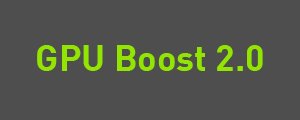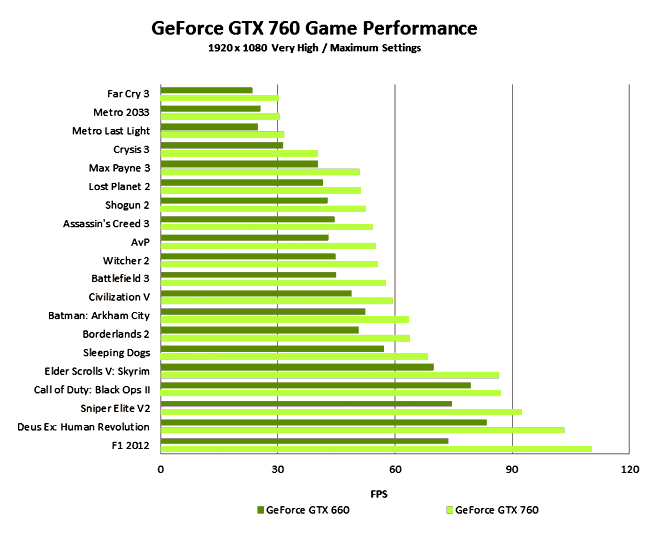Graphics processing unit manufacturer Nvidia announced a family of chips that feature the company's GPU Boost 2.0 technology, which intelligently adjusts GPU clock speed to maximize graphics performance.

Testing Nvidia DLSS 2.0 on RTX 2060 Super 8GB in Control (Graphics and Performance Comparison). Is it worth to enable? CPU: AMD Ryzen 5 3600 GPU: MSI GeF. However, Nvidia answered me that the GTX Titan core speed under Linux will be 837MHz and about the boost technology this: “unfortunately no, boost 1.0/2.0 are only supported on windows.” Thus for me it is still not clear what is the clock speed of GTX6xx GPU’s under Linux. Dec 22, 2014 Variable clock speeds stem from boost settings available on both AMD and nVidia architecture, but each company's version differs in execution. This brief post will focus on nVidia Boost 2.0 and why. GPU Boost 2.0 I didn’t have a chance to do a ton of testing with Nvidia’s second-generation GPU Boost technology in my GeForce GTX Titan story, but the same capabilities carry over to GeForce. GPU Boost 2.0 NVIDIA updated its GPU Boost technology with the GTX Titan. First introduced with the GeForce GTX 680 (detailed here, read it if you are not familiar with GPU Boost), GPU Boost replaces orthodox methods of clock speed control with speed-ranges between a nominal clock speed and a boost.
The lineup of Nvidia GeForce 700M GPUs includes the GeForce GT 750M, GeForce GT 745M and GeForce GT 740M GPUs for the performance segment, as a well as GeForce GT 735M and GeForce GT 720M GPUs for the mainstream segment.
The chips also feature the company's Optimus technology, which enables extra-long battery life by switching the GPU on and off so it runs only when needed, and GeForce Experience software, which adjusts in-game settings for the best performance and visual quality specific to a user's notebook and keeps GeForce drivers up-to-date.
Before GPU Boost, GPUs were held back by synthetic benchmarks that pushed chips and power usage to the limit, far beyond the levels typically seen when playing games. This 'worst-case scenario' forced Nvidia to throttle GPUs, leaving spare performance on the table when playing games. GPU Boost resolves this problem by monitoring power usage and temperatures, enabling the GPU to use every last bit of performance without exceeding safety or comfort limits.
Further reading

Nvidia Boost 2.0 Beta
When a system isn't gaming or using a GPU-accelerated application, Optimus kicks in, automatically switching the display to the low-power integrated graphics processor. For example, if a user is browsing Facebook, the Nvidia GPU will be disabled, but once the user starts working with graphics-intensive apps like Photoshop, Optimus will enable the GPU to make use of GPU computation power. This automatic switching maximizes battery life when away from the wall, and minimizes power usage when plugged in.
Nvidia Boost 2.0 Beta

Nvidia Boost 2.0 Ultimate
'There is an elegant simplicity to Nvidia's GeForce 700M notebook technologies,' Rene Haas, vice president and general manager of the notebook business unit at Nvidia, said in a statement. 'You use your notebook how you want, and GeForce makes your experience awesome.'
A company release said notebook manufacturers, including Acer, Asus, Dell, HP, Lenovo, MSI, Samsung, Sony and Toshiba, plan to introduce notebooks with GPU Boost 2.0 technology.
'GeForce 500M and 600M were each class leaders, introducing sizeable performance gains, new features and increased efficiency. 700M is poised to continue this trend, but instead of delivering just raw performance, Nvidia is delivering a solution that makes your notebook more powerful, easier to use and more fun,' Brian Choi, Nvidia's product marketing manager for GeForce notebooks, wrote in a company blog post. 'By automatically giving you boosted performance, optimized gaming and long battery life, you'll discover that GeForce notebooks are the best notebooks you'll ever own.'

Comments are closed.